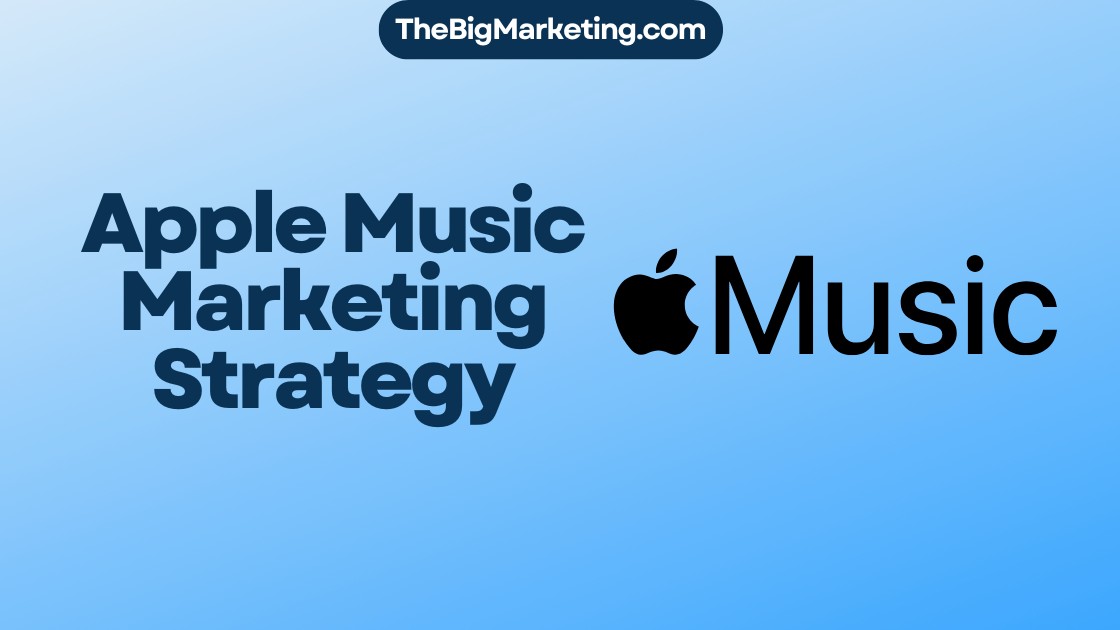Are you looking to maximize your success on Amazon? Understanding the ins and outs of Amazon marketing is crucial for businesses aiming to increase product visibility, attract more qualified leads, and ultimately boost revenue on the e-commerce giant.
Amazon marketing encompasses a range of strategies and tactics designed to help you sell more products on the platform. From Amazon SEO to Amazon PPC advertising and product listing optimization, each technique plays a vital role in driving sales and establishing a strong brand presence.
In this article, we’ll delve into the world of Amazon marketing, exploring its various components and highlighting how they contribute to your overall success on the platform. Whether you’re new to selling on Amazon or a seasoned seller, this comprehensive guide will equip you with the knowledge and tools you need to excel in the highly competitive Amazon marketplace.
Key Takeaways:
- Amazon marketing involves utilizing different strategies and tactics to sell more products on the platform.
- Components of Amazon marketing include Amazon SEO, Amazon PPC advertising, and product listing optimization.
- A robust Amazon marketing strategy can increase product visibility, attract qualified leads, and boost revenue.
- Understanding Amazon’s algorithms and utilizing effective SEO techniques is crucial for higher product ranking and visibility.
- Amazon PPC advertising allows you to reach your target audience and increase product visibility through various ad types.
The Importance of Amazon Marketing for Your Business
Marketing your products on Amazon is crucial for the success of your business. With millions of products available on the platform, having a solid Amazon marketing strategy is essential to ensure your products stand out from the competition.
One of the key components of Amazon marketing is Amazon advertising. This includes utilizing Amazon PPC (pay-per-click) advertising and promoting your products through Amazon sponsored products. These advertising methods can significantly increase your product visibility and attract more potential customers to your listings.
To effectively manage and optimize your Amazon marketing efforts, you can leverage the power of Amazon Seller Central. This centralized platform provides comprehensive tools and resources to help you monitor and enhance your product listings. It allows you to track performance metrics, adjust pricing strategies, and optimize product descriptions and images to maximize sales and revenue.
By implementing a strong Amazon marketing strategy and utilizing tools such as Amazon advertising, Amazon PPC, Amazon sponsored products, and Amazon Seller Central, you can gain a competitive edge and achieve success in the highly competitive Amazon marketplace.
Amazon SEO: Boosting Your Product Visibility
Amazon SEO is an essential aspect of your Amazon marketing strategy. By optimizing your product pages with relevant keywords, you can greatly enhance your product’s visibility in Amazon search results. Understanding Amazon’s search algorithms and employing effective SEO techniques are key to improving your product’s ranking and increasing its visibility to potential customers.
Optimizing Your Product Pages
Optimizing your product pages involves strategically incorporating relevant keywords across various elements, such as:
- Product Title: Craft a compelling and keyword-rich title that accurately describes your product.
- Bullet Points: Use concise bullet points that highlight key features and benefits, while also incorporating relevant keywords.
- Product Descriptions: Write informative and persuasive product descriptions that include keywords naturally throughout the content.
- Backend Keywords: Utilize the backend keyword fields provided by Amazon to add additional relevant keywords that can boost your product’s visibility.
By optimizing these elements with relevant and high-converting keywords, you can improve your product’s chances of appearing in relevant search queries.
Understanding Amazon’s Search Algorithms
Amazon’s search algorithms determine the ranking of products in search results. Although the exact algorithms are not disclosed, there are several factors that influence product visibility:
- Relevance: The degree to which your product matches a customer’s search query.
- Performance: How well your product has performed in terms of sales, customer reviews, and customer engagement.
- Availability: The availability of your product in terms of stock and fulfillment options.
By focusing on optimizing your product pages and meeting these algorithmic criteria, you can increase the chances of your products appearing higher in search results.
The Power of Relevant Keywords
Selecting the right keywords for your product is crucial for Amazon SEO. Conduct thorough keyword research to identify relevant and high-converting keywords that align with your target audience’s search queries. By using these keywords strategically in your product pages, you can attract more qualified traffic and increase the visibility of your products to potential customers.
In conclusion, Amazon SEO is a vital component of your overall Amazon marketing strategy. By optimizing your product pages with relevant keywords, understanding Amazon’s search algorithms, and utilizing effective SEO techniques, you can significantly boost your product’s visibility in Amazon search results and ultimately drive more sales.
Amazon PPC Advertising: Reaching Your Target Audience
When it comes to expanding your reach and attracting potential customers on Amazon, Amazon PPC (pay-per-click) advertising is a powerful tool at your disposal. With Amazon PPC, you can place ads in front of relevant shoppers, increasing your chances of driving conversions and boosting sales.
There are different types of Amazon PPC ads that you can leverage to effectively reach your target audience:
Sponsored Product Ads
Sponsored Product Ads are a popular form of Amazon PPC advertising. These ads appear at the top of Amazon search results when shoppers search for relevant keywords. They are designed to drive traffic to specific product pages, providing a direct path for potential customers to discover and purchase your products.
Sponsored Brands
Sponsored Brands is another important Amazon PPC ad format. These ads allow you to promote your brand as a whole and create awareness among potential customers. When shoppers click on a Sponsored Brands ad, they are directed to your Amazon storefront, where they can explore and purchase a variety of products from your brand.
Product Display Ads
Product Display Ads are a unique Amazon PPC ad type that targets shoppers who are browsing related product listings or detail pages. These ads display your product alongside relevant products, increasing the visibility of your offering and capturing the attention of potential customers during their purchase journey.
By strategically utilizing a combination of these Amazon PPC ad types, you can effectively reach your target audience and drive more sales for your products on Amazon.
Table: Comparison of Amazon PPC Ad Types
| Ad Type | Purpose | Placement | Targeting |
|---|---|---|---|
| Sponsored Product Ads | Drive traffic to specific product pages | Top of Amazon search results | Keyword-based targeting |
| Sponsored Brands | Create brand awareness and promote your brand’s products | Amazon storefront | Keyword-based targeting |
| Product Display Ads | Increase product visibility and capture shoppers’ attention | Related product listings or detail pages | Product or interest-based targeting |
Source: Amazon Advertising
By incorporating Amazon PPC into your marketing strategy, you can maximize your visibility on Amazon, attract more qualified leads, and drive conversions. However, it’s important to optimize your PPC campaigns, conduct keyword research, and continuously monitor and adjust your ad performance to ensure the best results for your advertising investment.
Managing Amazon Reviews for Improved Marketing
Managing customer reviews on Amazon is a critical aspect of effective Amazon marketing. These reviews offer valuable insights into the quality of your products and the overall customer experience. Addressing both negative and positive reviews can have a significant impact on your product reputation, customer satisfaction, and sales performance.
When it comes to negative reviews, prompt and effective management is crucial. Responding to negative reviews shows that you value customer feedback and are committed to resolving any issues. This gives you an opportunity to turn dissatisfied customers into happy ones and potentially change their negative review into a positive one.
To encourage positive reviews, you can implement various strategies. One effective method is incorporating email campaigns that request customers to share their experiences and leave a review. Including a link directly to the review section simplifies the process and increases the likelihood of customers leaving reviews.
Participating in Amazon’s Early Reviewer Program is another valuable approach. This program encourages customers who have purchased the product to leave a review in exchange for a small reward. This can significantly boost the number of positive reviews and enhance your product’s credibility.
Positive reviews are essential for building customer trust and attracting potential buyers. A higher number of positive reviews signals to potential customers that your products are reputable, reliable, and of high quality. This increased credibility can lead to improved sales and a competitive advantage on the Amazon platform.
The Importance of Amazon Review Management
Effective Amazon review management offers several benefits for your marketing efforts:
- Enhanced Reputation: Addressing negative reviews demonstrates your commitment to customer satisfaction and improves your brand’s reputation.
- Increased Customer Trust: Positive reviews establish trust with potential customers, showcasing your product’s reliability and quality.
- Competitive Advantage: A higher number of positive reviews provides a competitive edge, making your products more appealing to potential buyers.
- Valuable Feedback: Reviews offer valuable insights into customer preferences, allowing you to make informed business decisions and improve your product offerings
By actively managing and leveraging customer reviews, you can optimize your Amazon marketing strategy, attract more customers, increase your sales, and achieve long-term success on the platform.
Off-Site Amazon Marketing Strategies
In addition to marketing your Amazon store directly on the platform, there are various off-site Amazon marketing strategies you can utilize. These strategies encompass different channels and tactics that can help drive traffic to your Amazon store and boost sales. Let’s explore some of these off-site Amazon marketing strategies:
Search Engine Marketing (SEM)
Search engine marketing is a powerful way to drive traffic to your Amazon store by optimizing your product pages for search engine results. By incorporating SEO practices and paid ads, you can increase your product’s visibility on search engine platforms, attracting potential customers who are actively searching for similar products. By strategically using relevant keywords in your product listings, you can improve your ranking in search results and reach a wider audience.
Email Marketing
Email marketing is an effective strategy for reaching existing customers and encouraging repeat purchases on Amazon. By building an email list of your customers, you can send targeted campaigns promoting new products, exclusive offers, and personalized recommendations. Email marketing allows you to stay engaged with your customers, nurture relationships, and drive traffic to your Amazon store.
Social Media Marketing
Social media marketing is a powerful tool for promoting your products and engaging with a wider audience. By leveraging platforms such as Facebook, Instagram, Twitter, and Pinterest, you can create compelling content, run targeted advertising campaigns, and build brand awareness. Social media platforms provide an opportunity to showcase your products, share user-generated content, and interact with potential customers, ultimately driving traffic to your Amazon store.
Website Advertising
If you have a website that doesn’t have an online store, website advertising can be an effective way to drive traffic to your Amazon store. By placing strategic ads on your website, you can redirect visitors to your Amazon product listings and increase sales. This strategy is particularly useful if your website attracts a relevant audience that aligns with your target market.
To maximize the effectiveness of your off-site Amazon marketing strategies, it’s crucial to monitor and analyze the performance of each channel. By tracking metrics such as click-through rates, conversion rates, and sales generated from each strategy, you can identify areas of improvement and refine your marketing efforts accordingly. Remember, a well-rounded Amazon marketing strategy involves a combination of on-platform and off-site strategies to maximize your reach and drive sales.
The Power of Amazon Advertising
Amazon Advertising offers a wide range of advertising capabilities that can significantly impact your business. With its immense reach and extensive targeting options, Amazon Advertising provides a unique channel to promote specific products, build brand awareness, and maximize your return on investment (ROI).
Through Amazon Advertising, you can reach a vast audience of potential customers who are actively looking for products like yours. Whether you’re a seller, vendor, or brand owner, Amazon Advertising allows you to effectively promote your products and drive increased visibility and sales.
One of the key advantages of Amazon Advertising is its precise targeting capabilities. You have the ability to target specific demographics, interests, and behaviors of Amazon shoppers, ensuring that your ads are shown to the right audience at the right time. This targeting capability increases the chances of reaching customers who are more likely to be interested in your products, ultimately improving your advertising ROI.
Furthermore, Amazon Advertising offers various ad formats to suit different marketing objectives. You can choose from Sponsored Products, Sponsored Brands, and Display Ads, each serving a unique purpose in promoting your products and brand:
- Sponsored Products: These ads appear within search results and on product detail pages, driving traffic directly to your product listings. They are highly effective in increasing product visibility and attracting potential customers.
- Sponsored Brands: These ads showcase your brand logo, a custom headline, and multiple products. They serve as a powerful branding tool, enhancing brand awareness and recognition among shoppers.
- Display Ads: With Display Ads, you can reach customers on and off Amazon, displaying your ads on relevant websites, apps, and devices. This broadens your advertising reach and allows you to engage with potential customers beyond the Amazon platform.
By incorporating Amazon Advertising into your comprehensive Amazon marketing strategy, you can effectively promote your products, increase brand awareness, and drive sales. With its robust targeting options, diverse ad formats, and massive customer base, Amazon Advertising is a powerful tool for businesses seeking to maximize their advertising impact on the e-commerce giant.
| Key Features | Benefits |
|---|---|
| Precise Targeting | Reach your ideal audience and maximize your ROI by targeting specific demographics, interests, and behaviors of Amazon shoppers. |
| Multiple Ad Formats | Choose from Sponsored Products, Sponsored Brands, and Display Ads to effectively promote your products and enhance brand visibility. |
| Increased Visibility | With Amazon Advertising, you can increase the visibility of your products and ensure they stand out among the competition. |
| Brand Awareness | Utilize Sponsored Brands and Display Ads to boost brand recognition and increase customer awareness of your brand. |
| Improved Sales | By reaching a larger audience of potential customers, you can drive increased sales and revenue for your business. |
Amazon’s Marketing Mix: The 4Ps
Amazon’s marketing strategy is built upon a carefully crafted combination of the 4Ps of the marketing mix: product, price, place, and promotion. By effectively leveraging these elements, Amazon has become a global e-commerce powerhouse.
Product: Amazon offers an extensive range of products across multiple categories, catering to diverse customer needs. From electronics to household essentials, customers can find almost anything they need on the platform.
Price: Amazon employs competitive pricing strategies to attract customers and maintain competitiveness within the market. Through dynamic pricing algorithms and frequent promotions, Amazon offers customers value for their money.
Place: Amazon ensures that its products are easily accessible to customers through its extensive fulfillment network and global shipping capabilities. This enables customers from various regions to receive their orders quickly and efficiently.
Promotion: Amazon utilizes a variety of advertising and promotion channels, both on and off the platform, to effectively market its products. This includes targeted email campaigns, social media marketing, and strategic partnerships.
By consistently optimizing and integrating these aspects of the marketing mix, Amazon maintains a strong competitive advantage in the e-commerce industry, driving sales, customer loyalty, and overall business growth.
Amazon’s Digital Marketing Approach
Amazon understands the power of social media marketing in today’s digital landscape. To maximize its online presence and engage with customers on multiple channels, Amazon incorporates various social media platforms into its digital marketing strategy, including Facebook, Instagram, Twitter, YouTube, and Pinterest.
By leveraging these platforms, Amazon effectively advertises its products, engages with customers, and builds brand awareness. Let’s explore how Amazon utilizes each social media platform:
On Facebook, Amazon creates engaging content, such as product advertisements and promotional videos, to capture the attention of its audience. The company leverages targeted advertising campaigns to reach specific customer segments and drive traffic to its product listings on the Amazon website.
Instagram provides Amazon with a visually appealing platform to showcase its products. Through captivating images and videos, Amazon promotes its products to a vast audience. The platform also allows Amazon to collaborate with influencers and leverage their influence to increase brand visibility and reach.
With Twitter’s real-time nature, Amazon takes advantage of the platform to engage directly with customers. The company utilizes its Twitter account to provide customer support, share product updates, and promote special offers. By actively participating in conversations and addressing customer queries, Amazon strengthens its customer relationships and brand reputation.
YouTube
YouTube serves as a powerful video marketing platform for Amazon. The company creates high-quality and informative product videos that showcase the features and benefits of its products. Amazon’s YouTube channel allows customers to find detailed product reviews, tutorials, and demonstrations, providing them with the necessary information to make informed purchasing decisions.
Pinterest’s visual nature aligns well with Amazon’s product-centric approach to marketing. Amazon utilizes Pinterest to create visually appealing boards that feature its products, inspiring customers and driving them to discover and purchase products on the Amazon website. By leveraging Pinterest’s user base and search capabilities, Amazon maximizes its reach and attracts potential customers.
Through its comprehensive digital marketing approach that incorporates social media marketing, Amazon ensures a strong online presence, effectively engages with customers, and continues to be a dominant force in the e-commerce industry.
Amazon DSP: Expanding Advertising Reach
Amazon DSP (Demand Side Platform) is a powerful tool that enables sellers to expand their advertising reach and connect with a wider audience. With programmatic advertising capabilities, Amazon DSP allows for the automatic buying and placement of display and video ads. This platform goes beyond advertising solely on Amazon and extends to third-party websites, providing sellers with increased visibility and access to potential customers.
One of the key advantages of Amazon DSP is its advanced targeting capabilities. By leveraging data-driven insights, sellers can carefully target their ads to reach specific demographics, interests, and behaviors. This precision targeting ensures that ads are shown to the most relevant audience, maximizing the chances of engagement and conversions.
Amazon DSP offers various ad formats to suit different marketing objectives. Display ads, which include static banners and responsive ads, provide eye-catching visuals to capture users’ attention. Video ads, on the other hand, allow sellers to tell a compelling story and showcase product features effectively.
Here are some of the ad formats available on Amazon DSP:
- Desktop ads: Display ads optimized for desktop users.
- Mobile banners: Ads specifically designed for mobile devices.
- Mobile interstitial ads: Full-screen ads that appear between content on mobile devices.
- In-stream video ads: Video ads that play before, during, or after video content, captivating viewers.
By utilizing Amazon DSP’s expansive ad formats and targeting capabilities, sellers can significantly expand their advertising reach and attract potential customers on a broader scale. This increased visibility can drive traffic directly to their Amazon listings, leading to higher conversions and sales.
| Amazon DSP Benefits | Key Features |
|---|---|
| Expanded Reach | Allows ads on third-party websites, reaching a wider audience |
| Precision Targeting | Utilizes data-driven insights for precise audience targeting |
| Various Ad Formats | Offers display ads, mobile banners, interstitial ads, and in-stream video ads |
The Power of Amazon DSP
Amazon DSP provides sellers with a powerful tool to expand their advertising reach beyond Amazon, targeting an extensive network of third-party websites. With its advanced ad formats and precise targeting capabilities, Amazon DSP allows sellers to maximize their advertising effectiveness and capture the attention of potential customers across multiple digital touchpoints.
Conclusion
Amazon Marketing has proven to be a game-changer for businesses looking to succeed on the e-commerce giant. With its comprehensive array of strategies and tactics, Amazon Marketing drives sales, enhances visibility, and establishes strong brand presence. Employing a well-rounded Amazon marketing strategy that incorporates SEO, PPC advertising, review management, and off-site marketing is key to maximizing success on the platform.
Additionally, staying up-to-date with digital marketing trends and leveraging platforms like social media and programmatic advertising can further amplify the effectiveness of Amazon marketing efforts. By harnessing digital marketing trends and utilizing Amazon’s immense reach and marketing capabilities, businesses can tap into a vast audience and achieve remarkable results. Amazon’s marketing success is a testament to its ability to adapt and innovate in the dynamic e-commerce industry.
As digital marketing continues to evolve, Amazon remains at the forefront, constantly introducing new features and strategies to help businesses thrive. By embracing the power of Amazon Marketing and capitalizing on emerging digital marketing trends, businesses can position themselves for long-term success in the competitive e-commerce landscape.







